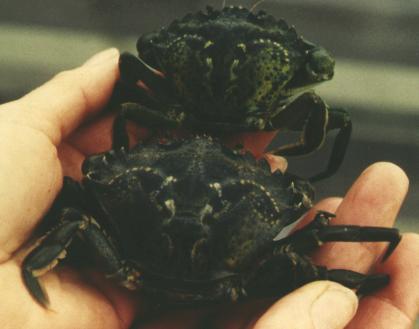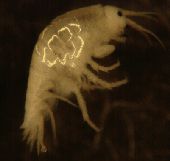
The Amphipod pictured bottom, right is a small olve-green shrimp-like crustacean found under rocks and seaweed. Amphipods are scavengers eating small organic debris. Known to some as scuds or sideswimmers these animals are laterraly composed with small eyes, small head, and strongly arched back. Ampipods are often seen in swarms with larger males clutching smaller females.
Barnacles (above) will probably be the most common thing you will see. They are found on rocks in all intertidal zones. These small, shrimp-like crustaceans cement their heads to rocks while building a limestone house around their bodies. These strange creatures even eat with their feet! When under water Barnacles open their movable top plates and extend their legs to filter plankton. These Mollusks are also hermaphroditic and cross-fertilize each other.
So have you been woundering about their eating habits? Now you can see a Movie of
How Barnacles Eat!
(may take a while to load)
